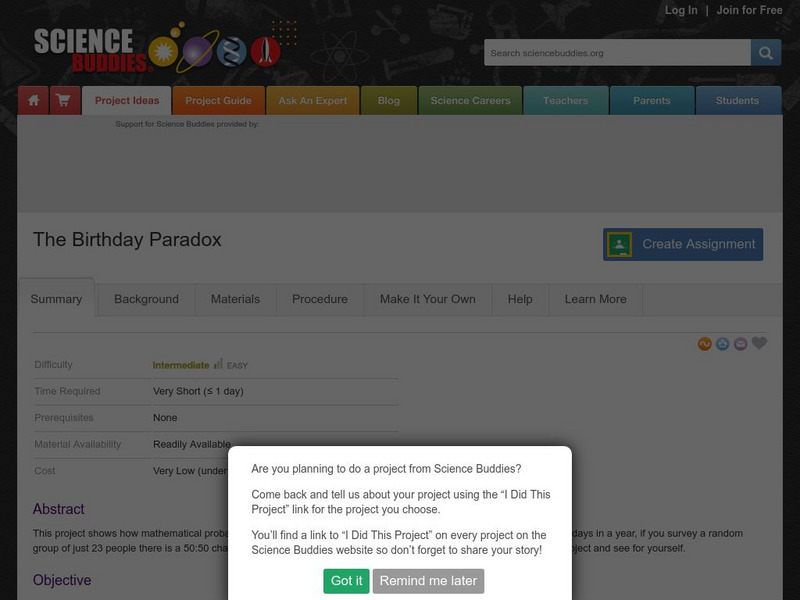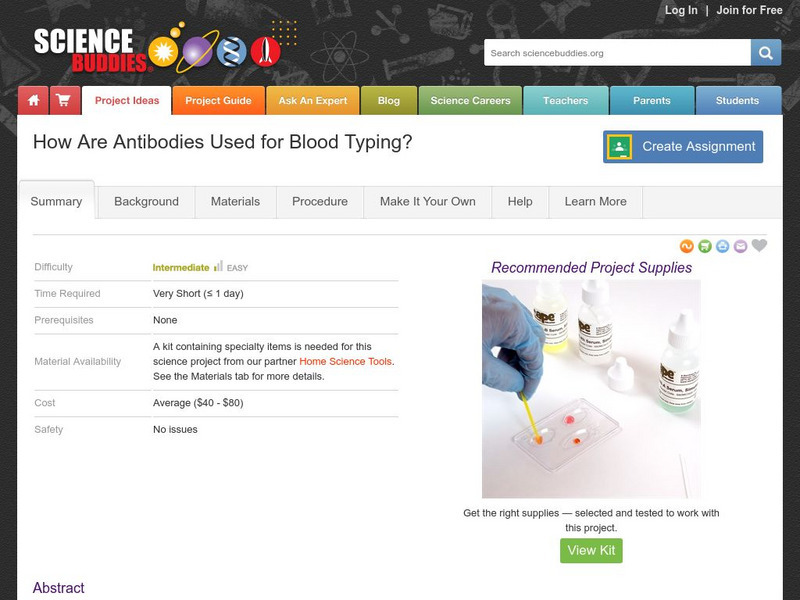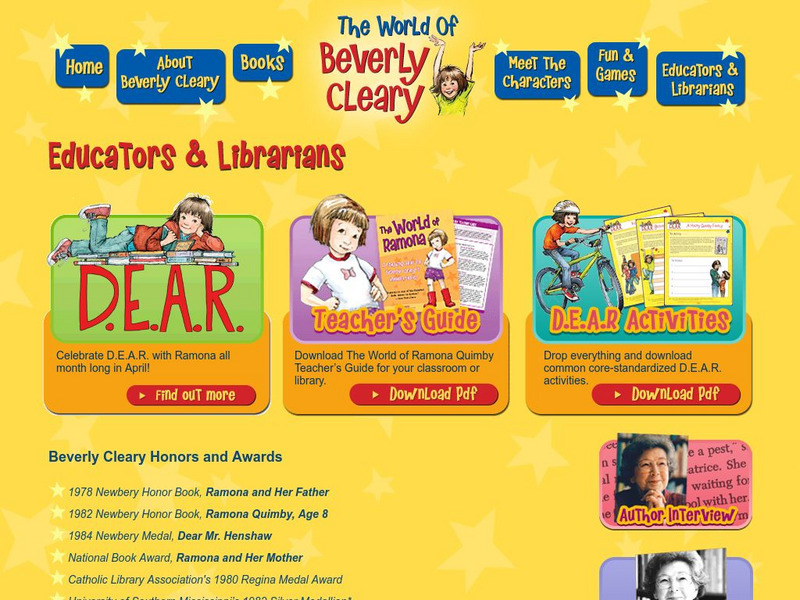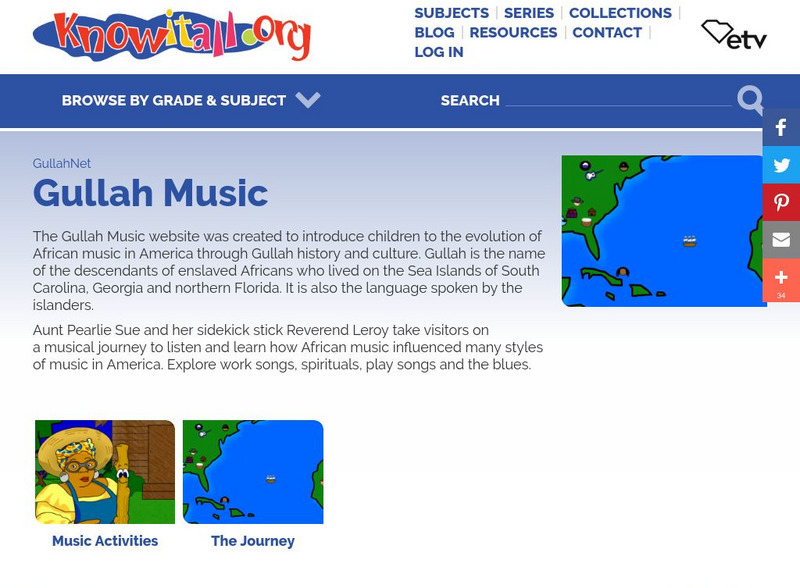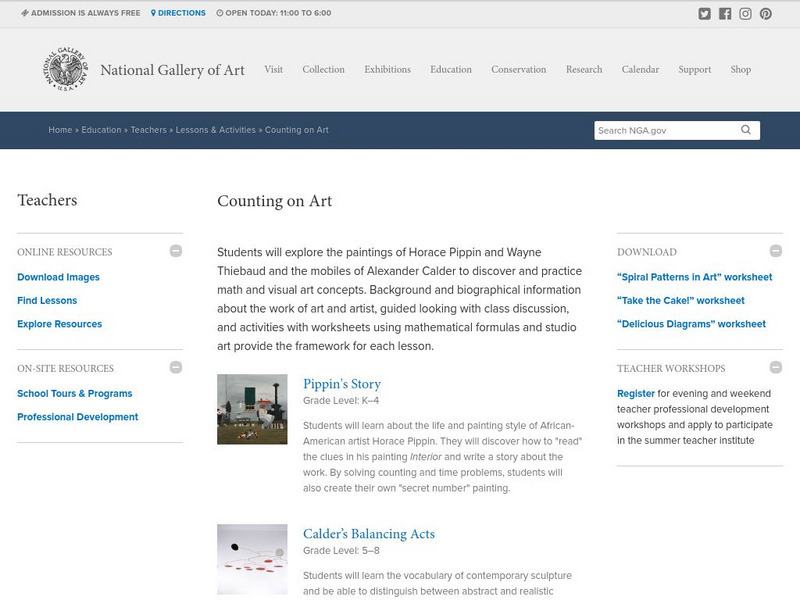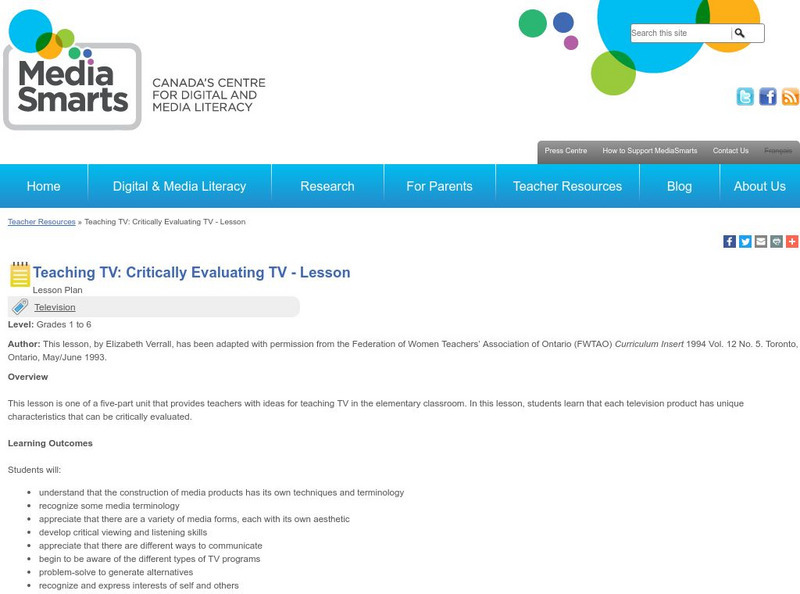Science Buddies
Science Buddies: Are There Dangerous Levels of Lead in Local Soil?
The element lead is a neurotoxin that is particularly dangerous to young children. Among other uses, lead compounds were common paint additives until being phased out for safer titanium-based additives beginning in the 1960's. Lead...
Science Buddies
Science Buddies: The Birthday Paradox
This project shows how mathematical probability sometimes contradicts our intuition. Despite the fact that there are 365 days in a year, if you survey a random group of just 23 people there is a 50:50 chance that two of them will have...
Science Buddies
Science Buddies: How Are Antibodies Used for Blood Typing?
The human immune system has various ways of responding to an infection caused by bacteria or viruses. Our bodies produce proteins (antibodies) that are highly specific for the infectious agent as a part of our "humoral" immune response....
Other
The World of Beverly Cleary: Teaching Resources
A comprehensive guide to teaching Beverly Cleary's Ramona books. Includes material available as web pages as well as PDF formats. Also provides the words of Cleary herself when discussing characterization, as well as some unforgettable...
Other
Lunar and Planetary Institute: Explore! Ice Worlds
Features a collection of hands-on activities, investigations, and explorations designed to engage students in learning about ice, both in the solar system and on planet Earth.
South Carolina Educational Television
Etv: Gullah Net: Gullah Music
Explore aspects of African music as reflected in the songs and music of slaves who lived in coastal South Carolina.
Other
Harper Collins Children's Books: Laura Ingalls Wilder
This site features the works of Laura Ingalls Wilder.
Read Works
Read Works: If Rocks Could Talk!: Obsidian
[Free Registration/Login Required] This PDF passage "If Rocks Could Talk!: Obsidian" from the American Museum of Natural History features an interview with an igneous rock named Obsidian. It is part of a paired text with "If Rocks Could...
National Gallery of Art
National Gallery of Art: Counting on Art
Several lesson plans available for grades K-8 that take a look at math and art. Each lesson includes printable resources, glossary of terms, an artist biography, and national math and visual arts standards.
NASA
Nasa: Night Sky Network: Pocket Solar System
Individual or classroom activity helps students understand the solar system because they can visualize it. Extension resources are included.
Media Smarts
Media Smarts:teaching Tv: Critically Evaluating Tv Lesson
MediaSmarts provides digital and media literacy lessons for students. In this activity, students will learn to watch and listen to a television with a critical lense
Better Lesson
Better Lesson: What Is Wind?
The purpose of the instructional activity is to introduce students to what causes wind and how it can be measured. Students will create a wind gauge and collect data on "wind speed". Detailed instructions are included as well as examples...
Other
Bmw: Safe on the Streets
The BMW Group offers interactive, fun, easy-to-use resources for teachers, parents, and students to help find ways to keep safe on the streets. Provides safety tips, activities, and quizzes that help you learn to be safe whether you are...
PBS
Pbs Learning Media: Map of the Human Heart
See how the human heart moves blood through the body in this animated feature from the NOVA: "Cut to the Heart" Web site.
Utah Education Network
Uen: Trb 3:5 Investigation 6 Heat From Machines
Learn how heat energy can be produced by mechanical and electrical machines.
Utah Education Network
Uen: Trb 3:1 Investigation 3 What Is Moonlight?
Understand that the moon shines by reflecting sunlight.
Better Lesson
Better Lesson: Tie It Up With Transition Words to Write a Story!
Read, write, and present a digital narrative with transition words to help us put the events in order! After modeling the lesson, groups of students will write narratives to recount a short sequence of events, they will include details...
Better Lesson
Better Lesson: Go Figure With Figurative Language It Helps With Predicting!
In this lesson, students will use figurative language, digital tools, and illustrations to write a story. The teacher will model how to use an app that has onomatopoeia to create a story with a good beginning, middle, and end. A video...
Children's Museum
The Children's Museum of Indianapolis: Mold and Cast
Students will define the term fossil, identify the difference between a mold and a cast fossil, and understand how scientists use models to learn about the physical structure of something in the natural world.
Science Buddies
Science Buddies: Measure Photosynthesis With Floating Leaves
In this activity, you will be able to observe the oxygen production in leaves by doing a floating leaf disk experiment. You can also find out how quickly plants produce oxygen, and what variables affect photosynthesis.
East of England Broadband Network
E2 Bn: About Myths and Legends: Why Are Stories Told
This website from England explains the role of myth and legend in every culture and gives many reasons for the importance of the retelling in myth, especially to children. There are links to other interesting spots on the general website.
Capital Community College Foundation
Guide to Grammar and Writing: Recognizing Prepositions
This preposition practice activity provides a paragraph from a Hemingway short story. Students click on all of the prepositions used in prepositional phrases in the story. These words will appear in a box below. When finished they can...
eSchool Today
E School Today: Non Renewable Energy
Learn what non-renewable energy is and the different types.
Colonial Williamsburg Foundation
Colonial Williamsburg: Merchant Match Up
Match these Historic Area establishments with their appropriate signs.



